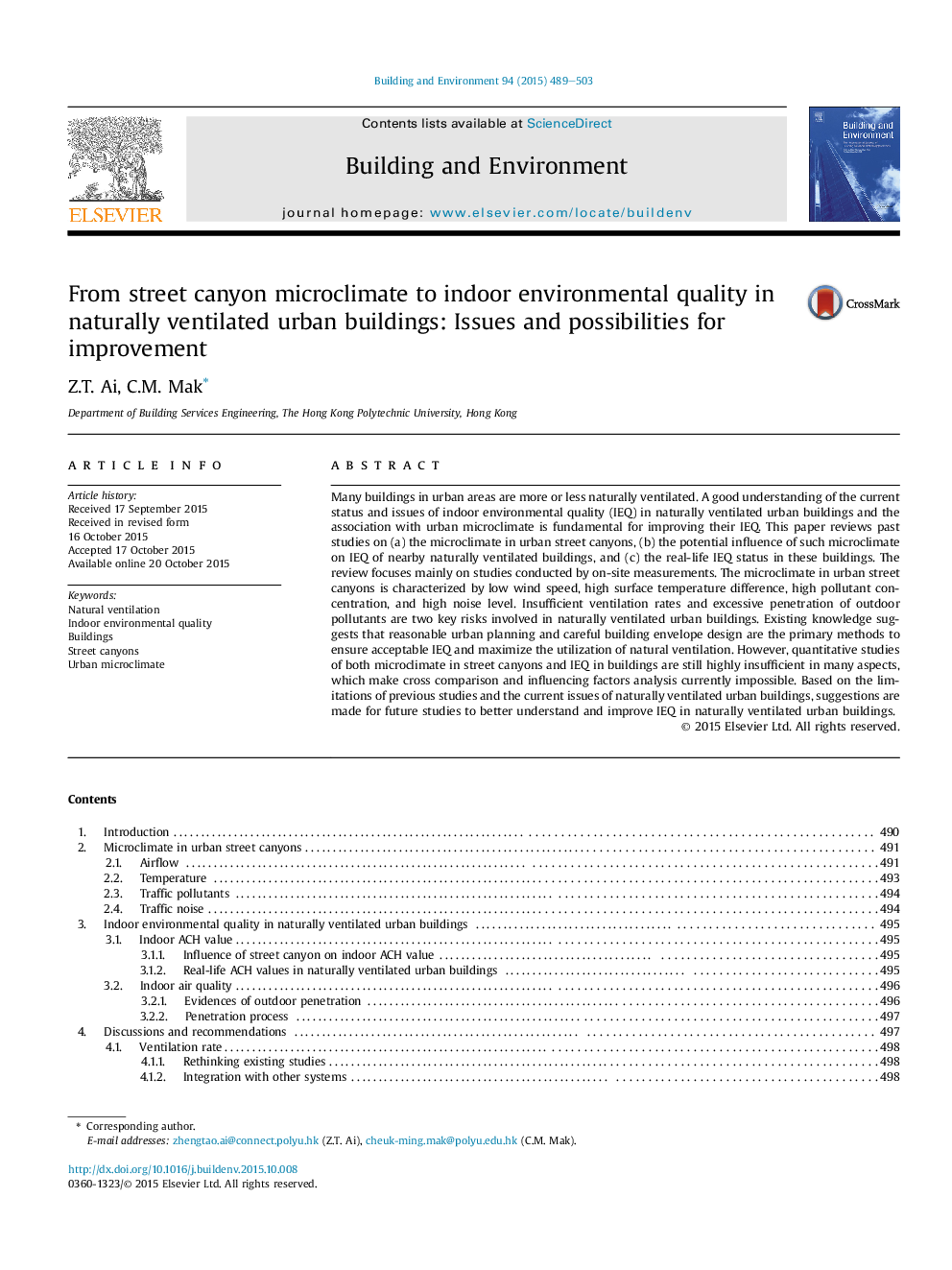| Article ID | Journal | Published Year | Pages | File Type |
|---|---|---|---|---|
| 247899 | Building and Environment | 2015 | 15 Pages |
Many buildings in urban areas are more or less naturally ventilated. A good understanding of the current status and issues of indoor environmental quality (IEQ) in naturally ventilated urban buildings and the association with urban microclimate is fundamental for improving their IEQ. This paper reviews past studies on (a) the microclimate in urban street canyons, (b) the potential influence of such microclimate on IEQ of nearby naturally ventilated buildings, and (c) the real-life IEQ status in these buildings. The review focuses mainly on studies conducted by on-site measurements. The microclimate in urban street canyons is characterized by low wind speed, high surface temperature difference, high pollutant concentration, and high noise level. Insufficient ventilation rates and excessive penetration of outdoor pollutants are two key risks involved in naturally ventilated urban buildings. Existing knowledge suggests that reasonable urban planning and careful building envelope design are the primary methods to ensure acceptable IEQ and maximize the utilization of natural ventilation. However, quantitative studies of both microclimate in street canyons and IEQ in buildings are still highly insufficient in many aspects, which make cross comparison and influencing factors analysis currently impossible. Based on the limitations of previous studies and the current issues of naturally ventilated urban buildings, suggestions are made for future studies to better understand and improve IEQ in naturally ventilated urban buildings.
